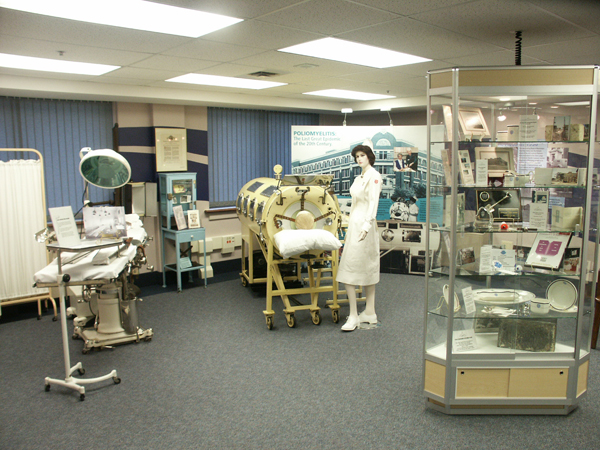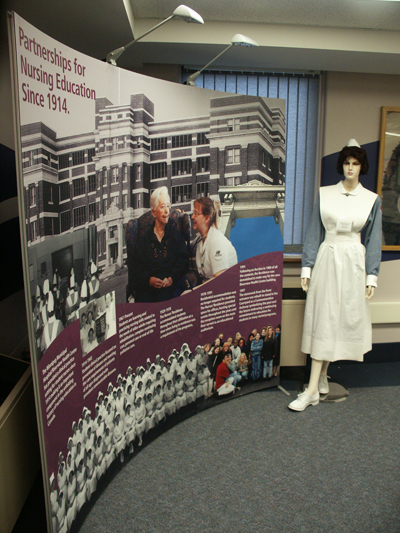The Riverview Heritage Museum, located in room 238 of the Princess Elizabeth Building, celebrates both the unique history and the exciting future of the Riverview Health Centre.

The Museum captures the Centre’s unique, century old story through its well-organized groupings of artifacts, photographs, brochures, portrait galleries, murals and descriptive writings. For example, one of the last remaining iron lungs from the tragic polio epidemic in the early 1950s is on display, as are mid-century nursing uniforms, doctor’s utensils and medicine chests.

Those visiting the Museum will find a pictorial account of the devastation of the site during the Red River Flood of 1950, including one shot that shows the top of an ambulance barely visible at the water’s surface. They’ll also view photos of children with whooping cough lined up in their cribs in the King George Hospital (circa 1920) and adults with tuberculosis convalescing on the sunlit balcony of the Kind Edward Hospital. Both of these buildings are now demolished.
Those turn-of-the-century buildings, known until 1993 as Winnipeg Municipal Hospital, were torn down in 1999 to make way for a brand new state-of-the-art medical complex. Images of cranes, bulldozers and wrecking balls yield to red bricks, mortar, home-like furnishings and smiling faces of caring staff in the new facility, now known as Riverview Health Centre.
There is no doubt that the Riverview Heritage Museum tells an important story – one that has, through its vivid chapters and pioneering characters, influenced the way we provide care at this dawn of a new century.
The Museum also showcases another important component of Riverview Health Centre’s past: its role in the unfolding history of nursing education in Canada. In 1914, Riverview began partnerships with nursing educational institutions, providing a clinical practice setting for student nurses. Then, the focus was on disease prevention and care of all ages of patients diagnosed with communicable diseases. Today, students learn, and practice nursing skills related to the needs of older adults requiring rehabilitation, complex continuing care, personal care or end-of-life care.
